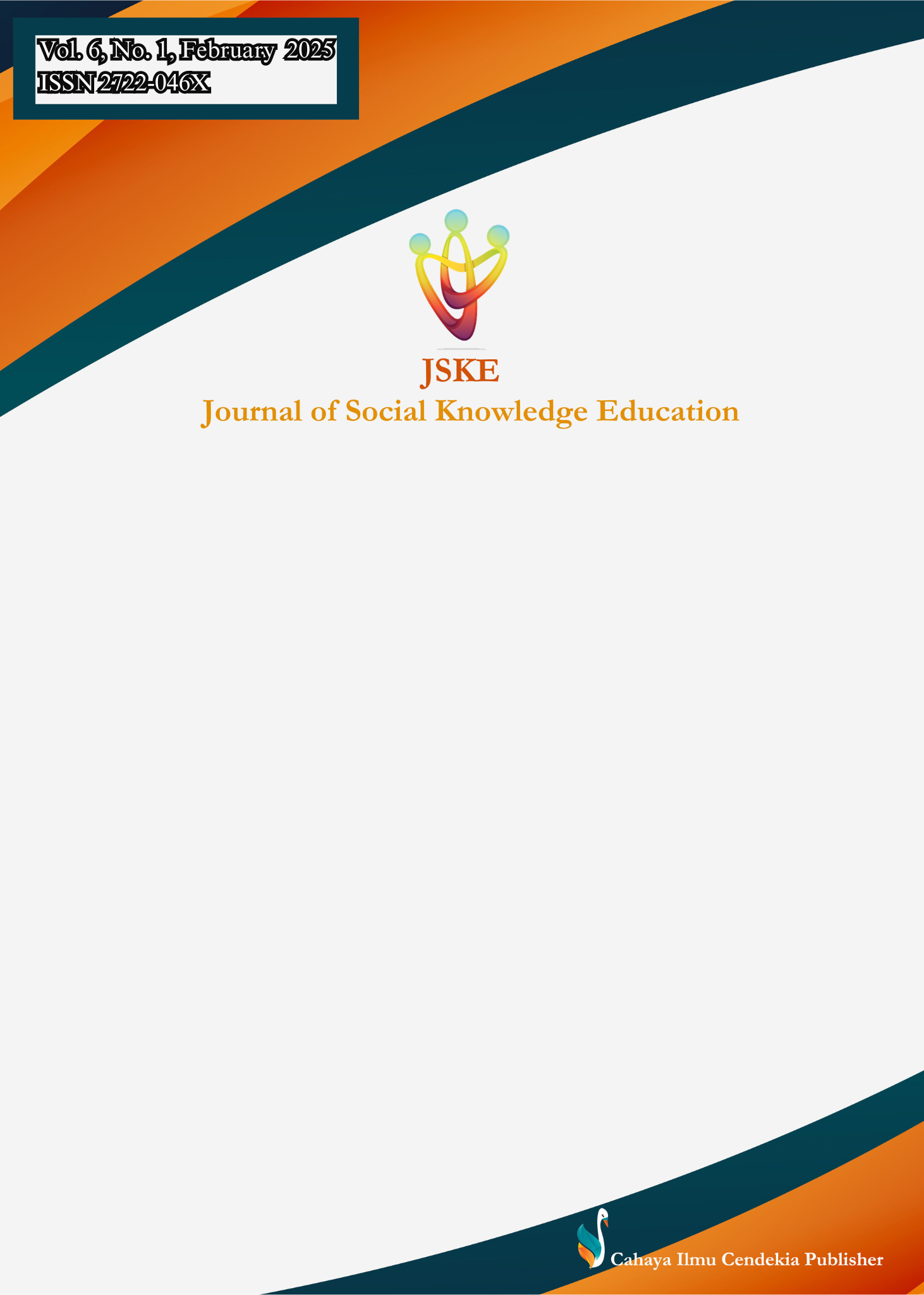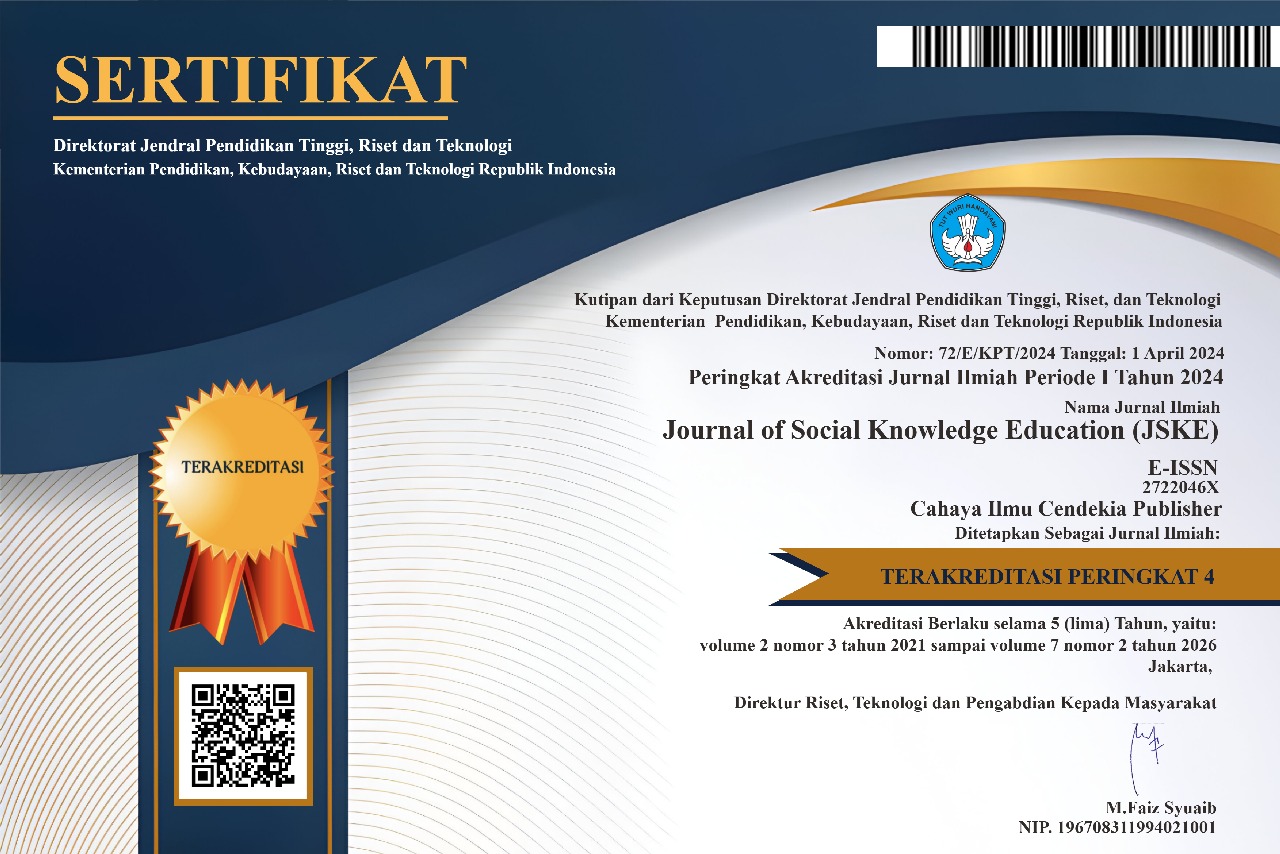The Effect of Content Marketing, Live Shopping, and Flash Sale on Skintific Purchase Decisions on Tiktok Social Media Users
Abstract
Purpose of the study: This study aims to examine the influence of (1) Content Marketing, (2) Live shopping, and flash sales on purchasing decisions for Skintific products on TikTok.
Methodology: This research utilizes a quantitative approach with primary data collected through Likert-scale questionnaires from 100 respondents in Surakarta. Data analysis was conducted using SPSS 26 software with statistical tests, including partial and simultaneous tests, to assess the impact of marketing strategies.
Main Findings: Content marketing influences purchasing decisions by 13.6%, live shopping by 20.3%, and flash sales by 22%. The R-square value indicates that these three strategies collectively contribute 55.9% to purchasing decisions, while 44.1% is influenced by other factors not examined in this study.
Novelty/Originality of this study: This study provides empirical insights into the effectiveness of TikTok's digital marketing strategies, particularly live shopping and flash sales, in shaping consumer purchasing behavior. It advances existing knowledge by highlighting the significant impact of visual engagement and urgency-driven marketing on millennials and Gen Z consumers within the skincare industry.
References
D. H. Aribowo, Sulhaini, and L. E. Herman, “effect of flash sale method, product knowledge and in home shopping tendency toward consumer online purchase decisions,” Russ. J. Agric. Socio-Economic Sci., vol. 102, no. 6, pp. 97–107, Jun. 2020, doi: 10.18551/rjoas.2020-06.12.
D. Pertiwi and H. Gusfa, “pengaruh content marketing terhadap pembentukan brand awareness pada kalbis institute,” 2018.
N. Hakim, M. Angkasa, Y. Sundoro, and Y. Tatiana, “The Influence of Social Media, Content Marketing on Purchasing Decisions Through Customer Engagement Online Travel Agent,” DIJDBM, vol. 5, no. 5, 2024, doi: 10.38035/dijdbm.v5i5.
Y. Liu, “Effects of user experience in live marketing on consumer purchase intention,” 2023.
T. Nguyen and H. Le, “Flash sales and their impact on consumer behavior: A study of vietnamese e-commerce,” Asian J. Mark., vol. 11, 2022.
M. Fadhillah, N., & Saputra, “Pengaruh Konten pemasaran digital terhadap keputusan pembelian pada generasi milenial,” J. Pemasar. Digit., vol. 7, 2021.
P. Kotler and K. L. Keller, “Marketing Management 15th Edition: Global Edition.,” Engl. Pearson Educ., 2019.
I. S. and A. Savitry, “The role of consistent and relevant content in building emotional brnad connections,” Asian J. Mark., vol. 12, 2016.
L. W. and S. H. X Zhao, “Creating Urgency: The role of flash sales in enhancing online purchase behavior,” E-commerce Res. J., vol. 8, 2020.
D. Shukmalla, C. Savitri, W. Pertiwi, U. Buana, and P. Karawang, “Jurnal Mirai Management Pengaruh Content Marketing Dan Influencer Marketing Terhadap Keputusan Pembelian Produk Kosmetik Lokal di Tiktok Shop (Studi Pada Mahasiswa Manajemen Universitas Buana Perjuanagan Karawang),” vol. 8, pp. 326–341, 2023.
Y. Liu, “Effects of user experience in live marketing on consumer purchase intention,” BCP Bus. Manag. IMIM, 2022.
N. D. Rahmawati, W. Winarso, and H. Anas, "Pengaruh flash sale, live shopping, dan electronic word of mouth terhadap keputusan pembelian pada brand Skintific di Shopee (Studi kasus mahasiswa Bhayangkara Jakarta Raya)," JURNAL ECONOMINA, vol. 2, no. 10, pp. 2740–2755, 2023. doi: 10.55681/economina.v2i10.8971
T. Hennig-Thurau et al., "Electronic word-of-mouth via consumer-opinion platforms: What motivates consumers to articulate themselves on the internet?," Journal of Interactive Marketing, vol. 18, no. 1, pp. 38–52, 2004. doi: 10.1002/dir.10073
A. Amoozegar and L. Zongjun, “Article in Community practitioner: the journal of the Community Practitioners’ & Health Visitors’ Association ·,” 2023.
D. G. Muntinga, M. Moorman, and E. G. Smit, "Introducing COBRAs: Exploring motivations for brand-related social media use," International Journal of Advertising, vol. 30, no. 1, pp. 13–46, 2011. doi: 10.2501/IJA-30-1-013-046.
J. Pullizi, Epic Content Marketing: How to Tell a Different Story, Break Through the Clutter, and Win More Customers by Marketing Less. McGraw-Hill Education, 2014.
M. R. Solomon et al., Consumer Behavior: A European Perspective, 7th ed. Pearson Education, 2018.
S. F. Lamis, P. W. Handayani, and W. R. Fitriani, "Impulse buying during flash sales in the online marketplace," Cogent Business and Management, vol. 9, no. 1, 2022, doi: 10.1080/23311975.2022.2068402.
J. Smith and K. Johnson, "The evolution of content marketing strategies in the digital age," Journal of Marketing Communications, vol. 18, no. 2, pp. 112–125, 2020.
M. Alsoud, A. Trawnih, H. Yaseen, T. Majali, A. R. Alsoud, and O. A. Jaber, “How could entertainment content marketing affect intention to use the metaverse? Empirical findings,” Int. J. Inf. Manag. Data Insights, vol. 4, no. 2, Nov. 2024, doi: 10.1016/j.jjimei.2024.100258.
A. Gupta and S. Kumar, "Consumer decision-making in the era of live shopping: A review," International Journal of Retail & Distribution Management, vol. 50, no. 3, pp. 201–215, 2022.
M. Brown and L. Davis, "The psychology of flash sales: How urgency drives consumer behavior," Journal of Consumer Psychology, vol. 32, no. 1, pp. 45–60, 2023.
L. D. R. Mindiasari, H. Setiawan, “Real-time engagement: The effectiveness of live shopping on consumer trust and purchase intention,” Int. J. Digit. Commer., vol. 9, 2023.
K. Lee and P. Kim, "The impact of social media marketing on brand loyalty: A case study of Gen Z consumers," Journal of Brand Management, vol. 29, no. 4, pp. 301–315, 2021.
D. Apasrawirote and K. Yawised, “Factors Influencing the Behavioral and Purchase Intention on Live-streaming Shopping,” Asian J. Bus. Res., vol. 12, no. 1, pp. 39–56, 2022, doi: 10.14707/ajbr.220119.
A. R. Lia, “The role of urgency and exclusivity in driving impulsive buying behavior during flash sale,” J. Consum. Behav. Res., vol. 10, p. 3, 2022.
S. Patel and R. Kumar, "The effectiveness of live shopping in driving sales: A comparative analysis," Journal of E-Commerce Research, vol. 15, no. 1, pp. 34–48, 2022.
L. Zhang and X. Chen, "The impact of flash sales on consumer impulse buying behavior," Journal of Consumer Behavior, vol. 21, no. 3, pp. 201–215, 2021.
R. Kumar and S. Singh, "Content marketing strategies for building brand trust: A case study of the beauty industry," Journal of Brand Strategy, vol. 10, no. 2, pp. 89–102, 2022.
Y. Kim and J. Park, "The role of user-generated content in enhancing brand engagement," Journal of Interactive Advertising, vol. 22, no. 1, pp. 45–58, 2023.
A. Sharma and R. Gupta, "The impact of live streaming on consumer purchase decisions: A study of the fashion industry," Journal of Fashion Marketing and Management, vol. 26, no. 3, pp. 301–315, 2022.
J. Anderson and K. Brown, "The future of content marketing: Trends and challenges," Journal of Marketing Trends, vol. 8, no. 1, pp. 23–35, 2023.
L. Chen and Y. Wang, "The impact of live shopping on consumer trust and loyalty," Journal of Consumer Trust, vol. 12, no. 2, pp. 67–80, 2022.
Copyright (c) 2025 Ardian Dio Fauzi, Rini Adiyani, Kurniawati Darmaningrum

This work is licensed under a Creative Commons Attribution 4.0 International License.
Authors who publish with this journal agree to the following terms:
- Authors retain copyright and acknowledge that the Journal of social knowledge education (JSKE) is the first publisher licensed under a Creative Commons Attribution 4.0 International License.
- Authors are able to enter into separate, additional contractual arrangements for the non-exclusive distribution of the journal's published version of the work (e.g., post it to an institutional repository or publish it in a book), with an acknowledgment of its initial publication in this journal.
- Authors are permitted and encouraged to post their work online (e.g., in institutional repositories or on their website) prior to and during the submission process, as it can lead to productive exchanges and earlier and greater citation of published work.







.png)
.png)















